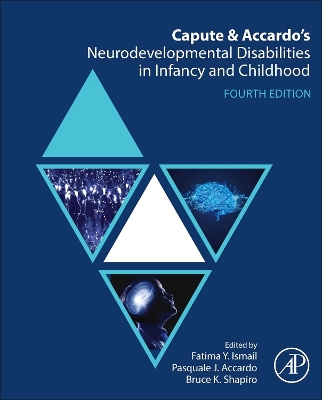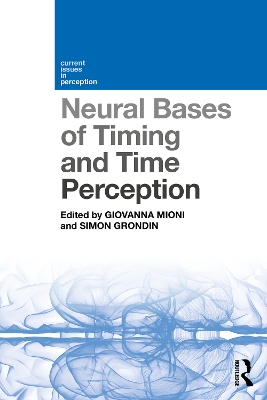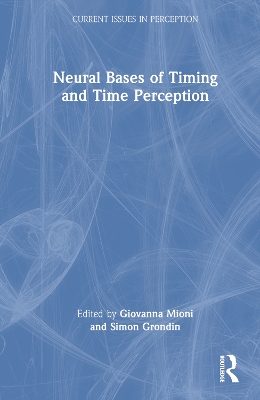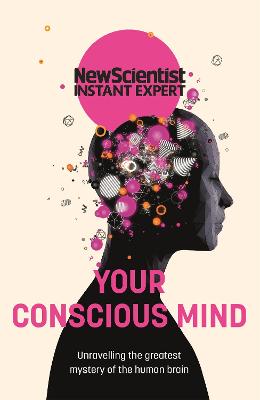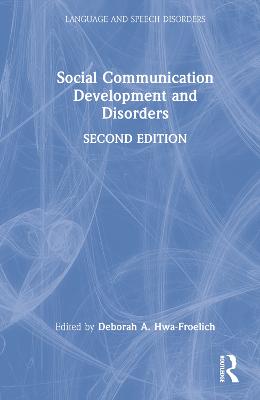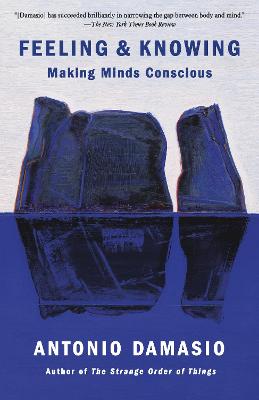Aranzio's Seahorse and the Search for Memory and Consciousness
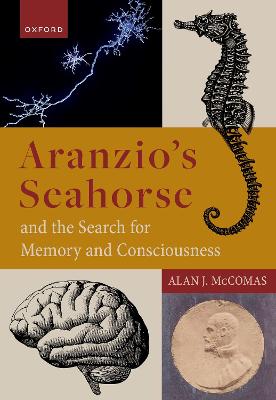 -10%
portes grátis
-10%
portes grátis
Aranzio's Seahorse and the Search for Memory and Consciousness
McComas, Professor Alan J.
Oxford University Press
09/2022
352
Dura
Inglês
9780192868244
15 a 20 dias
866
Descrição não disponível.
Part I: Memory
1: The undisturbed seahorse. (Europe, 16th-20th centuries).
2: A portentous crossing. (Montreal, 1944-1948: Donald Hebb, Peter and Brenda Milner).
3: Graduate studies at MNI. (Montreal, 1948-1954: Peter and Brenda Milner, James Olds, Wilder Penfield, Herbert Jasper).
4: Bold surgeon and compliant patient. (Hartford (Connecticut), 1953: William Scoville, Brenda Milner, Henry Molaison).
5: Triumph and an unprovoked attack. (Montreal, London, 1957; Wilder Penfield, Francis Walshe).
6: The path to psychiatry. (New York, 1957: Eric Kandel).
7: A trip to Australia. (Oslo, Canberra, 1961: Per Andersen, John Eccles).
8: Taking stock. (Montreal, 1960: Brenda Milner).
9: Visual focus. (Cambridge (Massachusetts), 1962, Stephen Kuffler, David Hubel, Torsten Wiesel).
10: Enter the giant sea slug. (Paris, 1962: Eric Kandel, Ladislav Tauc).
11: Human neurons--success and disappointment. (Paris, Uppsala, 1960s: Denise Albe-Fessard, Karl-Erik Hagbarth).
12: Human neurons--success and disappointment. (Paris, Uppsala, 1960s: Denise Albe-Fessard, Karl-Erik Hagbarth).
13: Return of the slug. (New York, 1965: Eric Kandel).
14: Polish insights. (Warsaw, 1968: Jerzy Konorski).
15: Continuing excitation in Norway. (Oslo, 1968: Terje Lomo, Timothy Bliss).
16: Revelation on Gower Street. (London, 1971: Patrick Wall, John O'Keefe).
17: Mathematics and the hippocampus. (Cambridge (UK), 1971: David Marr).
18: 1980: departures.
19: Hidden faces. (Oxford, New York: Edmund Rolls, Eric Kandel).
20: More than a headache. (London, 1985: Clive and Deborah Wearing).
21: Unexpectedly, a grid. (London, Oslo, 1996: Edvard and May-Britt Moser).
22: A telephone call. (Stockholm, New York, Cambridge (Massachusetts), 2000: Eric Kandel).
23: Death and disorder. (Bickford (Connecticut), San Diego, 2008: Henry Molaison, Suzanne Corkin, Jacopo Annese).
24: Jennifer Aniston discovered. (Los Angeles, 2005. Itzhak Fried, Christof Koch, Rodrigo Quian Quiroga).
25: New cells or not? (1983--present, New York, Boston, Princeton, New Haven, La Jolla: Fernando Nottebohn, Joseph Altman, Michael Kaplan, Elizabeth Gould, Pasko Rakic, Fred Gage).
26: Neurons that glow. (Toronto, Cambridge (Massachusetts), 2020: Sheena Josselyn, Susuma Tonegawa).
27: Summary.
Part II: The Evolution of Consciousness
28: Preamble.
29: Definition of consciousness.
30: Theories of consciousness.
31: Recognition of limbic system within brain.
32: Recognition of limbic system within brain.
33: Clinical evidence of hippocampal (limbic) involvement in consciousness
34: Animal evidence consistent with consciousness generation in limbic system (rather than cortex).
35: Animal evidence consistent with consciousness generation in limbic system (rather than cortex).
36: The evolutionary argument.
37: The minimum time argument.
38: Clive Wearing and Henry Molaison reconsidered.
39: Role of the amygdala.
40: Role of the non-hippocampal cortex.
41: Back to the hippocampus.
42: The numbers game
43: Speculations on spatial maps and other issues.
44: Final note: the multi-tasking hippocampus.
45: Recapitulation and synthesis
46: Epilogue
1: The undisturbed seahorse. (Europe, 16th-20th centuries).
2: A portentous crossing. (Montreal, 1944-1948: Donald Hebb, Peter and Brenda Milner).
3: Graduate studies at MNI. (Montreal, 1948-1954: Peter and Brenda Milner, James Olds, Wilder Penfield, Herbert Jasper).
4: Bold surgeon and compliant patient. (Hartford (Connecticut), 1953: William Scoville, Brenda Milner, Henry Molaison).
5: Triumph and an unprovoked attack. (Montreal, London, 1957; Wilder Penfield, Francis Walshe).
6: The path to psychiatry. (New York, 1957: Eric Kandel).
7: A trip to Australia. (Oslo, Canberra, 1961: Per Andersen, John Eccles).
8: Taking stock. (Montreal, 1960: Brenda Milner).
9: Visual focus. (Cambridge (Massachusetts), 1962, Stephen Kuffler, David Hubel, Torsten Wiesel).
10: Enter the giant sea slug. (Paris, 1962: Eric Kandel, Ladislav Tauc).
11: Human neurons--success and disappointment. (Paris, Uppsala, 1960s: Denise Albe-Fessard, Karl-Erik Hagbarth).
12: Human neurons--success and disappointment. (Paris, Uppsala, 1960s: Denise Albe-Fessard, Karl-Erik Hagbarth).
13: Return of the slug. (New York, 1965: Eric Kandel).
14: Polish insights. (Warsaw, 1968: Jerzy Konorski).
15: Continuing excitation in Norway. (Oslo, 1968: Terje Lomo, Timothy Bliss).
16: Revelation on Gower Street. (London, 1971: Patrick Wall, John O'Keefe).
17: Mathematics and the hippocampus. (Cambridge (UK), 1971: David Marr).
18: 1980: departures.
19: Hidden faces. (Oxford, New York: Edmund Rolls, Eric Kandel).
20: More than a headache. (London, 1985: Clive and Deborah Wearing).
21: Unexpectedly, a grid. (London, Oslo, 1996: Edvard and May-Britt Moser).
22: A telephone call. (Stockholm, New York, Cambridge (Massachusetts), 2000: Eric Kandel).
23: Death and disorder. (Bickford (Connecticut), San Diego, 2008: Henry Molaison, Suzanne Corkin, Jacopo Annese).
24: Jennifer Aniston discovered. (Los Angeles, 2005. Itzhak Fried, Christof Koch, Rodrigo Quian Quiroga).
25: New cells or not? (1983--present, New York, Boston, Princeton, New Haven, La Jolla: Fernando Nottebohn, Joseph Altman, Michael Kaplan, Elizabeth Gould, Pasko Rakic, Fred Gage).
26: Neurons that glow. (Toronto, Cambridge (Massachusetts), 2020: Sheena Josselyn, Susuma Tonegawa).
27: Summary.
Part II: The Evolution of Consciousness
28: Preamble.
29: Definition of consciousness.
30: Theories of consciousness.
31: Recognition of limbic system within brain.
32: Recognition of limbic system within brain.
33: Clinical evidence of hippocampal (limbic) involvement in consciousness
34: Animal evidence consistent with consciousness generation in limbic system (rather than cortex).
35: Animal evidence consistent with consciousness generation in limbic system (rather than cortex).
36: The evolutionary argument.
37: The minimum time argument.
38: Clive Wearing and Henry Molaison reconsidered.
39: Role of the amygdala.
40: Role of the non-hippocampal cortex.
41: Back to the hippocampus.
42: The numbers game
43: Speculations on spatial maps and other issues.
44: Final note: the multi-tasking hippocampus.
45: Recapitulation and synthesis
46: Epilogue
Este título pertence ao(s) assunto(s) indicados(s). Para ver outros títulos clique no assunto desejado.
Part I: Memory
1: The undisturbed seahorse. (Europe, 16th-20th centuries).
2: A portentous crossing. (Montreal, 1944-1948: Donald Hebb, Peter and Brenda Milner).
3: Graduate studies at MNI. (Montreal, 1948-1954: Peter and Brenda Milner, James Olds, Wilder Penfield, Herbert Jasper).
4: Bold surgeon and compliant patient. (Hartford (Connecticut), 1953: William Scoville, Brenda Milner, Henry Molaison).
5: Triumph and an unprovoked attack. (Montreal, London, 1957; Wilder Penfield, Francis Walshe).
6: The path to psychiatry. (New York, 1957: Eric Kandel).
7: A trip to Australia. (Oslo, Canberra, 1961: Per Andersen, John Eccles).
8: Taking stock. (Montreal, 1960: Brenda Milner).
9: Visual focus. (Cambridge (Massachusetts), 1962, Stephen Kuffler, David Hubel, Torsten Wiesel).
10: Enter the giant sea slug. (Paris, 1962: Eric Kandel, Ladislav Tauc).
11: Human neurons--success and disappointment. (Paris, Uppsala, 1960s: Denise Albe-Fessard, Karl-Erik Hagbarth).
12: Human neurons--success and disappointment. (Paris, Uppsala, 1960s: Denise Albe-Fessard, Karl-Erik Hagbarth).
13: Return of the slug. (New York, 1965: Eric Kandel).
14: Polish insights. (Warsaw, 1968: Jerzy Konorski).
15: Continuing excitation in Norway. (Oslo, 1968: Terje Lomo, Timothy Bliss).
16: Revelation on Gower Street. (London, 1971: Patrick Wall, John O'Keefe).
17: Mathematics and the hippocampus. (Cambridge (UK), 1971: David Marr).
18: 1980: departures.
19: Hidden faces. (Oxford, New York: Edmund Rolls, Eric Kandel).
20: More than a headache. (London, 1985: Clive and Deborah Wearing).
21: Unexpectedly, a grid. (London, Oslo, 1996: Edvard and May-Britt Moser).
22: A telephone call. (Stockholm, New York, Cambridge (Massachusetts), 2000: Eric Kandel).
23: Death and disorder. (Bickford (Connecticut), San Diego, 2008: Henry Molaison, Suzanne Corkin, Jacopo Annese).
24: Jennifer Aniston discovered. (Los Angeles, 2005. Itzhak Fried, Christof Koch, Rodrigo Quian Quiroga).
25: New cells or not? (1983--present, New York, Boston, Princeton, New Haven, La Jolla: Fernando Nottebohn, Joseph Altman, Michael Kaplan, Elizabeth Gould, Pasko Rakic, Fred Gage).
26: Neurons that glow. (Toronto, Cambridge (Massachusetts), 2020: Sheena Josselyn, Susuma Tonegawa).
27: Summary.
Part II: The Evolution of Consciousness
28: Preamble.
29: Definition of consciousness.
30: Theories of consciousness.
31: Recognition of limbic system within brain.
32: Recognition of limbic system within brain.
33: Clinical evidence of hippocampal (limbic) involvement in consciousness
34: Animal evidence consistent with consciousness generation in limbic system (rather than cortex).
35: Animal evidence consistent with consciousness generation in limbic system (rather than cortex).
36: The evolutionary argument.
37: The minimum time argument.
38: Clive Wearing and Henry Molaison reconsidered.
39: Role of the amygdala.
40: Role of the non-hippocampal cortex.
41: Back to the hippocampus.
42: The numbers game
43: Speculations on spatial maps and other issues.
44: Final note: the multi-tasking hippocampus.
45: Recapitulation and synthesis
46: Epilogue
1: The undisturbed seahorse. (Europe, 16th-20th centuries).
2: A portentous crossing. (Montreal, 1944-1948: Donald Hebb, Peter and Brenda Milner).
3: Graduate studies at MNI. (Montreal, 1948-1954: Peter and Brenda Milner, James Olds, Wilder Penfield, Herbert Jasper).
4: Bold surgeon and compliant patient. (Hartford (Connecticut), 1953: William Scoville, Brenda Milner, Henry Molaison).
5: Triumph and an unprovoked attack. (Montreal, London, 1957; Wilder Penfield, Francis Walshe).
6: The path to psychiatry. (New York, 1957: Eric Kandel).
7: A trip to Australia. (Oslo, Canberra, 1961: Per Andersen, John Eccles).
8: Taking stock. (Montreal, 1960: Brenda Milner).
9: Visual focus. (Cambridge (Massachusetts), 1962, Stephen Kuffler, David Hubel, Torsten Wiesel).
10: Enter the giant sea slug. (Paris, 1962: Eric Kandel, Ladislav Tauc).
11: Human neurons--success and disappointment. (Paris, Uppsala, 1960s: Denise Albe-Fessard, Karl-Erik Hagbarth).
12: Human neurons--success and disappointment. (Paris, Uppsala, 1960s: Denise Albe-Fessard, Karl-Erik Hagbarth).
13: Return of the slug. (New York, 1965: Eric Kandel).
14: Polish insights. (Warsaw, 1968: Jerzy Konorski).
15: Continuing excitation in Norway. (Oslo, 1968: Terje Lomo, Timothy Bliss).
16: Revelation on Gower Street. (London, 1971: Patrick Wall, John O'Keefe).
17: Mathematics and the hippocampus. (Cambridge (UK), 1971: David Marr).
18: 1980: departures.
19: Hidden faces. (Oxford, New York: Edmund Rolls, Eric Kandel).
20: More than a headache. (London, 1985: Clive and Deborah Wearing).
21: Unexpectedly, a grid. (London, Oslo, 1996: Edvard and May-Britt Moser).
22: A telephone call. (Stockholm, New York, Cambridge (Massachusetts), 2000: Eric Kandel).
23: Death and disorder. (Bickford (Connecticut), San Diego, 2008: Henry Molaison, Suzanne Corkin, Jacopo Annese).
24: Jennifer Aniston discovered. (Los Angeles, 2005. Itzhak Fried, Christof Koch, Rodrigo Quian Quiroga).
25: New cells or not? (1983--present, New York, Boston, Princeton, New Haven, La Jolla: Fernando Nottebohn, Joseph Altman, Michael Kaplan, Elizabeth Gould, Pasko Rakic, Fred Gage).
26: Neurons that glow. (Toronto, Cambridge (Massachusetts), 2020: Sheena Josselyn, Susuma Tonegawa).
27: Summary.
Part II: The Evolution of Consciousness
28: Preamble.
29: Definition of consciousness.
30: Theories of consciousness.
31: Recognition of limbic system within brain.
32: Recognition of limbic system within brain.
33: Clinical evidence of hippocampal (limbic) involvement in consciousness
34: Animal evidence consistent with consciousness generation in limbic system (rather than cortex).
35: Animal evidence consistent with consciousness generation in limbic system (rather than cortex).
36: The evolutionary argument.
37: The minimum time argument.
38: Clive Wearing and Henry Molaison reconsidered.
39: Role of the amygdala.
40: Role of the non-hippocampal cortex.
41: Back to the hippocampus.
42: The numbers game
43: Speculations on spatial maps and other issues.
44: Final note: the multi-tasking hippocampus.
45: Recapitulation and synthesis
46: Epilogue
Este título pertence ao(s) assunto(s) indicados(s). Para ver outros títulos clique no assunto desejado.

